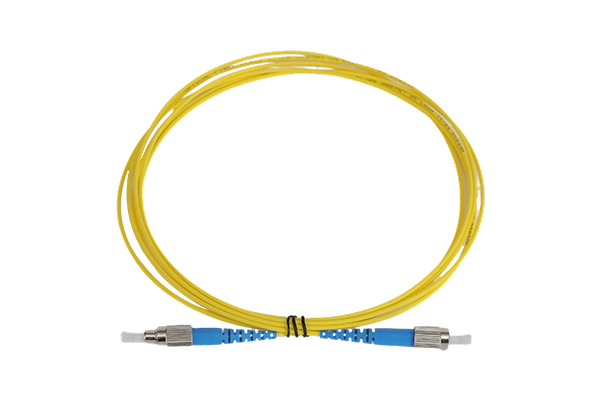-
Conventional Fiber Optic Patch Cord FCPC Style 1
FCPC Style 1
Send Email Details
FC fiber connector (short for Ferrule Connector) is a classic type of fiber connector, first developed by NTT Corporation of Japan. FC connectors are widely used in the field of fiber optic communications for their excellent optical performance and reliable mechanical stability. They usually use metal or ceramic sleeves to protect the fiber end faces and have a spiral tightening mechanism to ensure the stability of the connection. FC connectors support single-mode and multi-mode optical fibers and are suitable for various high-vibration environments and high-precision fiber docking requirements. -
Conventional Fiber Optic Patch Cord FCPC Style 2
FCPC Style 2
Send Email Details
FC fiber connector (short for Ferrule Connector) is a classic type of fiber connector, first developed by NTT Corporation of Japan. FC connectors are widely used in the field of fiber optic communications for their excellent optical performance and reliable mechanical stability. They usually use metal or ceramic sleeves to protect the fiber end faces and have a spiral tightening mechanism to ensure the stability of the connection. FC connectors support single-mode and multi-mode optical fibers and are suitable for various high-vibration environments and high-precision fiber docking requirements. -
Conventional Fiber Optic Patch Cord FCPC Style 3
FCPC Style 3
Send Email Details
FC fiber connector (short for Ferrule Connector) is a classic type of fiber connector, first developed by NTT Corporation of Japan. FC connectors are widely used in the field of fiber optic communications for their excellent optical performance and reliable mechanical stability. They usually use metal or ceramic sleeves to protect the fiber end faces and have a spiral tightening mechanism to ensure the stability of the connection. FC connectors support single-mode and multi-mode optical fibers and are suitable for various high-vibration environments and high-precision fiber docking requirements. -
Conventional Fiber Optic Patch Cord FCPC FC Fiber Patch Cable
FC Fiber Patch Cable
Send Email Details
FC fiber connector (short for Ferrule Connector) is a classic type of fiber optic connector, first developed by NTT Corporation of Japan. FC connectors are widely used in the field of fiber optic communications for their excellent optical performance and reliable mechanical stability. They usually use metal or ceramic sleeves to protect the fiber end faces and have a spiral tightening mechanism to ensure the stability of the connection. FC connectors support single-mode and multi-mode optical fibers and are suitable for various high-vibration environments and high-precision fiber docking requirements. -
Conventional Fiber Optic Patch Cord LC PC
LC PC
Send Email Details
The LC fiber optic connector is designed to meet the growing demand for high-density fiber optic connections. Developed by Bell Labs, it is about half the size of the traditional SC connector, allowing more fiber optic connections to be deployed in the same space. The miniaturized design of the LC connector is very suitable for high-density fiber optic wiring environments such as data centers, telecommunications centers, and local area network (LAN) applications. In addition, the push-pull plug-in mechanism of the LC connector also makes fiber optic connections faster and more convenient. -
Conventional Fiber Optic Patch Cord LCPC uniboot
LCPC uniboot
Send Email Details
LC Uniboot fiber optic connector is a compact connector designed for high-density fiber optic network environment. It is specially designed to meet the needs of high-density fiber optic network. Uniboot connector, with its unique tail shape, can achieve more compact space occupation and higher port density, which is very beneficial for saving data center and network equipment rack space. In addition, Uniboot connectors generally have good optical performance and mechanical stability, support fast plugging and unplugging, and are suitable for application scenarios that require frequent connection and disconnection.









